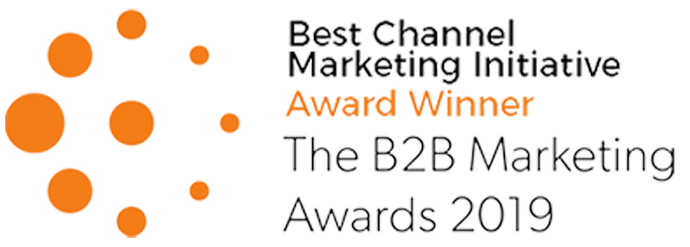 Over the past few years, we have seen a surge in brands focusing their marketing efforts more on customer experience and enhanced personalisation, reflecting a definite shift towards B2C practices being applied to B2B campaigns. As ABM becomes more widely recognised as a must have marketing strategy, customer centric campaigns will no doubt become the norm. As someone who has spent much of my career in the B2C world, I am accustomed to customer centric, insight driven campaigns focusing on customer journey and experience, and think this sort of personable marketing would be welcomed (and successful) in the B2B world.
Over the past few years, we have seen a surge in brands focusing their marketing efforts more on customer experience and enhanced personalisation, reflecting a definite shift towards B2C practices being applied to B2B campaigns. As ABM becomes more widely recognised as a must have marketing strategy, customer centric campaigns will no doubt become the norm. As someone who has spent much of my career in the B2C world, I am accustomed to customer centric, insight driven campaigns focusing on customer journey and experience, and think this sort of personable marketing would be welcomed (and successful) in the B2B world.
With the 2018 B2B Ignite summit coming up on Tuesday, I can’t help but look back on a blog written this time last year by our Business Development Director, Pascale Smith (who incidentally will be attending B2B Ignite on Tuesday, so please get in touch if you want to arrange a coffee and pick her brains), which looks at the use of AI in B2B marketing. Back in June 2017, when this blog was written, AI was primarily utilised by B2C marketers and the B2B market trailed behind, with many companies limited by the cost implications. However, the cloud, APIs and headless commerce platforms have made AI more accessible and more affordable and only 12 months later, we are putting this functionality in place for our clients and applying AI technology across our marketing campaigns. This surely paves the way for further B2C principles to be translated into b2b practices? This blog is as relevant as ever. So here it is again! Over to you Pascale…
“As someone intensely interested in marketing technologies, at the recent B2B Marketing Ignite summit, I was all over the stands offering new technologies in predictive marketing and intent marketing. But something which really caught my eye was how AI (artificial intelligence) can be used to do some really smart things.
We are all – whether we are aware of it, or not – given customer experiences based on AI in our day to day consumption of digital goods – whether it’s Shopping on Amazon, or what we’re watching on BBC iPlayer (iPlayer are going to enforce sign in before you can watch on demand, partly in order to serve us more relevant content). We’re so used to it in some contexts, those ‘seamless personalised experiences’, that we take it for granted and hence underplay the significance.
The adoption of AI in the B2B world is much lower – but can be equally powerful. According to a recent article, only 10% of B2B companies are using AI in their marketing. Furthermore, that percentage is predicted to increase to 80% in the next 3 years. That’s a huge level of growth and it makes sense to me; the purchase of any B2B product is based on need – not emotion. This makes it somewhat predictable and therefore lends itself well to AI.
Take this example; imagine your entire database of customers – what they’ve been exposed to in terms of emails, content they’ve downloaded, what value they are as a customer; if you apply modelling to that historical data, it gives you the ability to predict things about your customers’ likely future behaviour. E.g. whether they are likely to be successfully upsold to, or, when exposed to a certain combination of content pieces, whether they are likely to convert into a customer, or, based on this pattern of behaviour, whether they are at risk of churn.
You end up with a matrix of ‘predicted value’ versus ‘predicted churn’ which can inform both your marketing strategy and your sales team’s resource; making them far more efficient. For example, you can segment your data into groups such as high predictability of churn and low value; this group can be served the right automated messages to turn them into a lower churn likelihood. A high value customer with a high predicted churn should be given much more face to face attention. Equally important is the segment of low predicted churn customers with low predicted value, there isn’t much point spending too much resource here and they can stay in the feel-good automated email campaigns.
Can you see how this is helpful? It’s the ability to focus resource where it will deliver the most to your pipeline.
But it goes further. Oh, so much further. If you can predict the behaviour of your current customer base – you can link these insights into your acquisition marketing. What message you serve on display ads and at what point in the purchase cycle? What level email marketing with what subjects? What content should they be directed to? When is the best point to pick up the phone? You can much more effectively target new leads.
I love the idea and I can see how people believe that it will be an inevitable part of our future marketing strategies. I do feel that the 80% adoption in 3 years is a little optimistic, but I’m always happy to be surprised!” (Blog Credit: Pascale Smith)
If you would like to catch up with Pascale, and our CEO, Tom Perry at the B2B Ignite conference on Tuesday, please drop us a line and we’ll arrange to meet you for a coffee! Alternatively, if you want to chat to us about AI and how you could build it in to your current marketing activities, please get in touch.
post by topic
- ABM (31)
- Sherpa News (28)
- News (27)
- Demand Generation (20)
- Online Marketing (18)
- Inbound Marketing for Technology Companies (15)
- Channel Marketing (13)
- Content Marketing Strategy (12)
- Channel Transformation (11)
- sales and marketing alignment (11)
- Blended Sales & Marketing (9)
- Lead Follow-Up (9)
- Lead Management (8)
- Social Media (8)
- personalisation (8)
- Customer Relationship Management (CRM) (7)
- Lead Scoring (7)
- Martech (6)
- Buyers' Journey (5)
- Technology Marketing (5)
- Optimisation (4)
- email (4)
- Resellers (3)
- SEO (3)
- The IT Marketing Agency (3)
- channel agency (3)
- video (3)
- CSR (2)
- Charity Events (2)
- PX (2)
- Partner Experience (2)
- Team (2)
- Website Data (2)
- Data (1)
- Events (1)
- Harvard Business Review (1)
- birthday (1)
- customer experience (1)
- hubspot (1)
- marketing automation (1)



.png)
.png)
